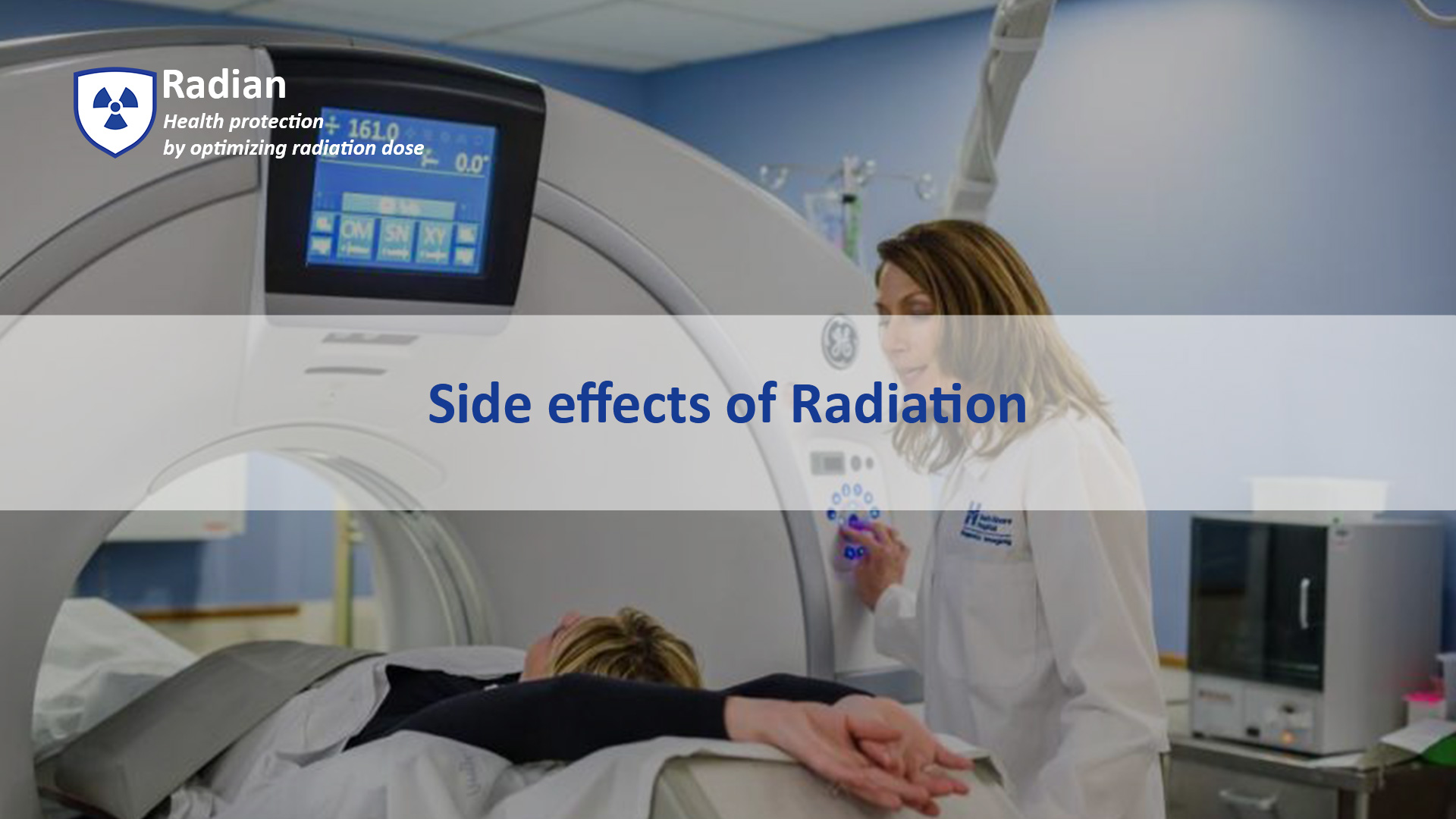The word “safe” means different things to different people. For many, the idea of being safe is the absence of risk or harm. However, the reality is that there is a level of risk in almost everything we do. For example, speed limits on roads are set to maximize safety. Nevertheless, accidents occur even when drivers are obeying the speed limit. Despite the risks, we make a conscious decision to drive. Similar conscious decisions are made when radiation is used. Radiation exposure carries a health risk. Knowing what the risks are, helps to set dose limits and regulations that limit exposure to an acceptable risk.
Radiation affects our health
The primary way radiation affects our health is through the breakage of DNA molecules. When it does, three things can happen:
- First, the DNA can be repaired properly. In this case, the cell continues to function normally.
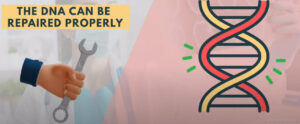
- Second, The DNA damage can be so severe that the cell dies. When the DNA receives a very high dose of radiation, delivered over a short period of time, the cell may either die or be damaged beyond repair. If this kills a large enough number of cells in a tissue or organ, early radiation effects may occur. These are called deterministic effects It only occurs above a certain threshold dose and the severity increases as the dose increases. The radiation effects include skin burns, loss of hair, and in extreme cases, death. Most deterministic effects occur shortly after exposure and are predictable and reproducible. For example, radiotherapy to certain parts of the body at increasing levels will result in erythema or burns. The first evidence of deterministic effects became apparent with early experimenters and users of radiation. They suffered severe skin and hand damage due to excessive radiation doses. More recently, this relationship was observed at the Chernobyl nuclear plant accident where more than 100 firefighters received high radiation doses (800 to 16,000 mSv). Two of them died within days of exposure and Close to 30 more firefighters died within the first three months.

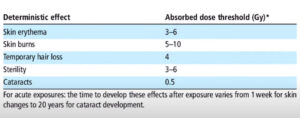
- Finally, in some cases, the DNA of the cell may be damaged by radiation, but the damage does not kill the cell. It results in mutations that are transmitted from generation to generation and it increases the possibility of developing cancer cells. Cancer is called a stochastic effect. In a stochastic effect, increasing the dose increases the probability of damage, but the severity of the effect is independent of the dose. Cancer behaves the same whether an organ received 1 Gray or 100 Gray, all that changes is the probability of a cancer forming. Think of it as a lottery drawing. Buying more tickets increases the chances of winning but does not increase the prize. However, at no time is it certain that cancer will result. There is also no threshold dose below which it is relatively certain that cancer will not occur.

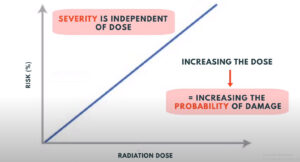
In the atomic bombing of Hiroshima, there were many cases of leukemia that started after the incubation period of 6-7 years after the bombing. After leukemia peaked, there was an increase in solid tumors with an incubation period of 10-40 years. According to most recent estimates, about 49% of the cases of leukemia among the survivors are caused by radiation exposure.
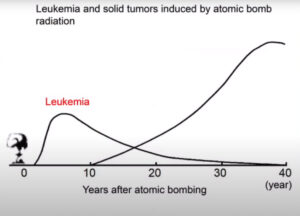
The higher the radiation dose and the lower the age of an individual at the time of radiation exposure, the higher the probability of developing leukemia. So in summary, Deterministic effects are threshold effects, that are related directly to the absorbed radiation dose and the severity of the effect increases as the dose increases. Stochastic effects occur by chance, generally occurring without a threshold level of dose. The probability of occurrence is proportional to the dose but the severity of the effect is independent of the dose received.
